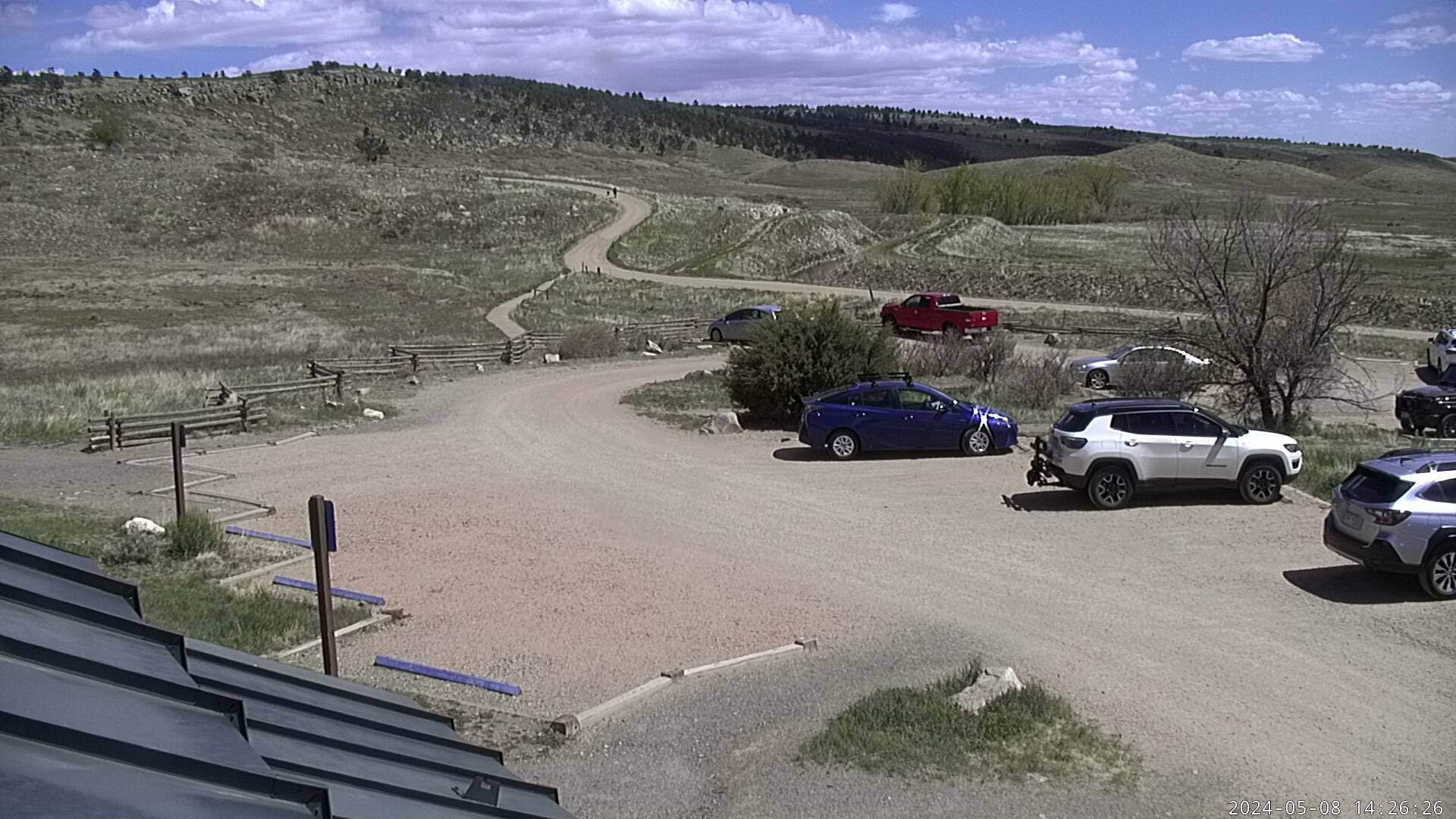The easternmost point of the foothills in Boulder County, the Ron Stewart Preserve at Rabbit Mountain is rich with human history, geological features, and an abundance of plants and wildlife.
Ron Stewart Preserve at Rabbit Mountain
Rules & Regulations






Photos
Open Gallery in New WindowAlong Colorado’s Front Range, the sweeping grasslands of the Great Plains rise to meet the rugged peaks of the Southern Rocky Mountains. Where they meet we find the Foothills – a zone of geological and biological transition. In the 2,871 acres that make up Rabbit Mountain, plant communities ranging from grasslands to shrublands to forests provide a variety of habitats for a rich diversity of wildlife.
Elk Management
For eight years, limited hunting was allowed at the park. Management objectives have been met and hunting is not needed in the foreseeable future. Learn more about the Elk and Vegetation Management Plan.
Mammals
- Black bear
- Black-tailed prairie dog
- Bobcat
- Coyote
- Deer mouse
- Desert cottontail
- Elk
- Mexican wood rat
- Mule deer
- Rock squirrel
- Thirteen-lined ground squirrel
Birds
- American crow
- American goldfinch
- American kestrel
- American robin
- Black-billed magpie
- Blue-gray gnatcatcher
- Chipping sparrow
- Cliff swallow
- Common nighthawk
- Common raven
- Dark-eyed junco
- Downy woodpecker
- Golden eagle
- House wren
- Lark sparrow
- Lazuli bunting
- Mountain bluebird
- Mourning dove
- Northern flicker
- Red-tailed hawk
- Rufous-sided (spotted) towhee
- Solitary vireo
- Turkey vulture
- Western meadowlark
- Western wood-pewee
- Yellow-breasted chat
Reptiles
- Bullsnake
- Prairie rattlesnake
- Racer
White Wildflowers
- Fleabane daisy (Erigeron spp)
- Milk vetch (Astralagus spp)
- Prickly poppy (Argemone polyarihmos)
- Sand lily (Leucocinum montanum)
- Spring beauty (Claytonia lanceolata)
- Stemless evening primrose (Oenothera caespitosa)
- White onion (Allium textile)
- Winged buckwheat (Eriogonum alatum)
Yellow Wildflowers
- Blanket flower (Gaillardia aristata)
- Coneflower (Ratbida columnifera)
- Gumweed (Grindelia squarrosa)
- Hairy goldenaster (Heterotheca villosa)
- Prickly pear cactus (Opuntia compressa)
- Whiskbroom parsley (Harbouris trachypleura)
- Yellow evening primrose (Oenothera sp)
Pink, Orange & Red Wildflowers
- Ball cactus (Coryphanta vivipara)
- Copper mallow (Sphaeralcea coccinea)
- Fleabane (Erigeron spp)
- Wild geranium (Geranium caespitosum)
Purple & Blue Wildflowers
- Colorado loco (Oxytropis lambertii)
- Common harebell (Campanula rotundifolia)
- Lambert’s locoweed or Colorado locoweed (Oxytropis lambertii)
- Plains larkspur (Delphinium virescens)
- Spiderwort (Tradescontia accidentalis)
Green Wildflowers
- Fringed sage (Artemisia frigida)
- Prairie sage (artemisia ludoviciana)
Shrubs
- Mountain mahogany
- Rabbitbrush
- Skunkbush
- Wax currant
- Yucca
Trees
- Rocky Mountain juniper
- Ponderosa pine
About 140 million years ago this area was a tropical lowland covered by rivers, swamps, and lagoons. Much of Colorado was below sea level and covered with an inland sea for millions of years.
This sea retreated around 65 million years ago when forces deep within the earth began uplifting the Rocky Mountains. These mountain-building forces created tension in the rocks around Rabbit Mountain, causing them to break. Movement along such a break is called a fault. A major fault extends across the north end of the property. Slippage along area faults has caused Rabbit Mountain to be positioned three miles east of the main hogbacks of the foothills. Because of this location, you can see Rabbit Mountain from three counties.
Native Peoples
Rabbit Mountain was an ideal winter home for the Arapaho Indians, providing them with shelter from the strong west winds, a variety of edible plants, water from naturally-occurring springs, and an abundance of game. It is rumored that the Arapaho Chief Niwot may have spent considerable time in the area.
Homesteaders Arrive
In the middle of the 19th century, homesteaders took up land in the area, hoping to strike it rich prospecting for gold. Few homesteaders were successful, with many turning to farming as an alternative. Their arrival marked the Native Indians’ displacement at Rabbit Mountain, as well as the entire state.
Western Water
In 1959, the St. Vrain Supply Canal was constructed across Rabbit Mountain as part of the Colorado Big Thompson Project. Still operational, the project was designed to carry water through the mountains from the relatively lush western slope to the semi-arid Front Range.
Acquisition
Jack Moomaw was a forest ranger and had a strong desire to preserve wilderness areas, including Rabbit Mountain. These aspirations were realized when his granddaughter sold Rabbit Mountain to Boulder County in 1984. Because of this acquisition, Rabbit Mountain will be preserved in its natural state for many generations to enjoy.













